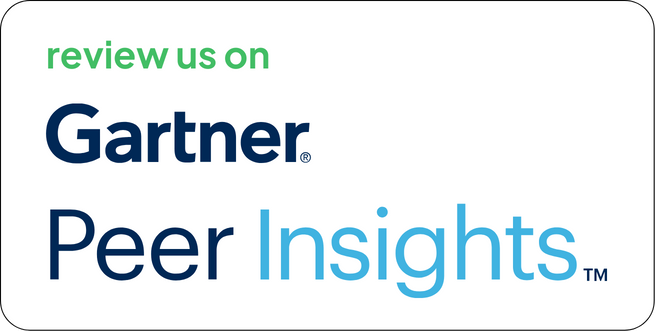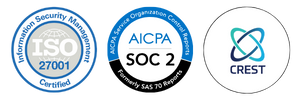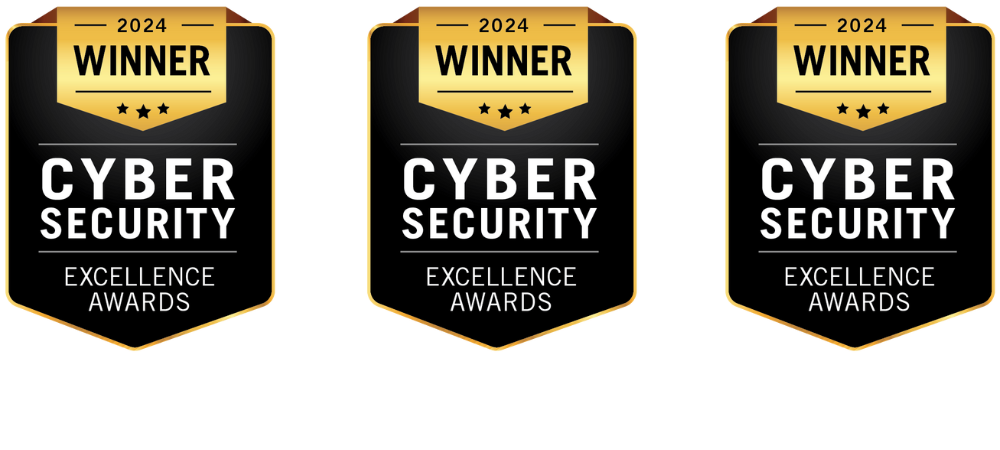Security teams today face a flood of vulnerability data. Scanners like Qualys do an excellent job at surfacing exposures across assets, networks, and infrastructure, but that’s just the start. The real challenge begins after the scan: making sense of what was found, figuring out what truly matters, and ensuring the right people fix it in time.
This is where Strobes comes in. As part of its Continuous Threat Exposure Management (CTEM) platform, Strobes integrates with Qualys to help organizations shift from scan reports to smart, risk-driven remediation.
Let’s break down how this Qualys Integration with Strobes works, why it exists, and what kind of value it creates for security and DevOps teams alike.
What Is Qualys?
Qualys VMDR (Vulnerability Management, Detection and Response) is one of the most widely used tools for identifying infrastructure-level vulnerabilities. It scans internal and external assets, checks for configuration flaws, flags unpatched software, and provides detailed vulnerability signatures (like QIDs and CVEs).
Key strengths of Qualys include:
- Deep scan capabilities across OS, software, and network layers
- Comprehensive vulnerability database and QID mappings
- Detailed scan scheduling and asset group segmentation
- Agent-based or agentless scanning options
But while Qualys excels at finding issues, it doesn’t provide built-in mechanisms for:
- Cross-tool correlation (e.g., combining infra + app vulns)
- Risk scoring based on exploitability or business context
- Deduplication across repeated or overlapping scans
- Workflow automation for remediation, ticketing, or SLA tracking
And that’s where many teams hit a wall.
What Is Strobes?
Strobes is an AI-driven CTEM platform that connects vulnerability detection with operational security outcomes. It brings together:
- Risk-Based Vulnerability Management (RBVM)
- Pentesting-as-a-Service (PTaaS)
- Attack Surface Management (ASM)
- Application Security Posture Management (ASPM)
Rather than replacing your existing scanners, Strobes acts as the central brain that:
- Ingests data from tools like Qualys, Tenable, Burp Suite, and others
- Correlates and deduplicates findings
- Enriches vulnerabilities with threat intelligence and asset sensitivity
- Helps teams prioritize the top 3% of issues that actually matter
- Automates remediation workflows, from ticket creation to fix validation
The result? Less noise. More action. And real business impact.
The Purpose of the Qualys Integration with Strobes
The Strobes–Qualys integration is built for teams who:
- Use Qualys VM for infrastructure scanning
- Struggle with alert fatigue and duplicated data
- Want to improve time-to-remediate on critical vulnerabilities
- Need reporting and dashboards that go beyond raw scan output
By connecting Qualys directly with Strobes, teams can pull in vulnerability data automatically, contextualize it, and drive remediation through structured, automated workflows.
What the Qualys Integration with Strobes Actually Does?
Here’s what happens when you enable this Qualys Integration with Strobes:
1. Data Ingestion from Qualys
Strobes connects to the Qualys API and pulls in:
- Host data: IP addresses, OS, asset tags
- Vulnerability metadata: QIDs, CVEs, CVSS scores, titles, severity, remediation links
- Detection details: first seen/last seen, patch state, and more
This data is pulled at intervals, either one-time or scheduled (daily/weekly), depending on how your connector is configured.
2. Normalization and Deduplication
Once ingested, the raw Qualys data is parsed and normalized into Strobes’ internal data model. Here’s where things get smarter:
- Repeated QIDs across multiple scans? Deduplicated.
- Same vuln reported across multiple tools (e.g., Qualys + Nexpose)? Correlated.
- Issues no longer present? Automatically closed or updated.
This reduces unnecessary triage and eliminates false urgency from redundant entries.
3. Risk Scoring and Prioritization
Strobes doesn’t just list vulnerabilities, it ranks them based on real-world impact.
Every Qualys finding is re-evaluated using:
- Exploitability data from threat intel feeds
- Business context (e.g., is the asset public-facing? internet-exposed?)
- Asset sensitivity (e.g., prod vs. test? Finance server vs. dev sandbox?)
The result is a customized risk score per vulnerability, unique to your environment. Teams stop chasing low-risk CVEs and focus only on what could cause real damage.
4. Workflow Integration
Once prioritized, findings flow into automated playbooks:
- Ticket creation in Jira, ServiceNow, or your ITSM tool of choice
- Remediation assignments based on ownership, asset tags, or severity
- SLA timers for tracking remediation timelines
- Fix validation through re-scanning or manual review
- Notifications via Slack, email, or Teams
This means no more emailing spreadsheets or updating shared docs. Everything is traceable, auditable, and visible in real time.
5. Unified Dashboards and Reporting
Instead of flipping between Qualys reports, Excel sheets, and dashboards, teams get a single-pane-of-glass view in Strobes:
- Vulnerability views filtered by source (e.g., Qualys)
- Risk heatmaps and SLA trends
- Asset-wise vulnerability breakdown
- Compliance reports mapped to frameworks like NIST, ISO, and SOC 2
It’s reporting that actually supports both day-to-day work and boardroom visibility.
Why This Integration Matters?
Integrating Qualys with Strobes isn’t just about moving scan data from one system to another. It’s about transforming vulnerability management from a reactive scanning process into an orchestrated, risk-informed operation. Below are the six core reasons this Qualys Integration with Strobes delivers tangible, strategic value:
1. Puts an End to Scan Data Overload
Most organizations run Qualys scans on a regular basis, weekly, nightly, sometimes even continuously. Over time, this produces tens of thousands of findings. These include:
- Duplicate vulnerabilities on the same host
- Issues repeated across assets in different environments
- Low-risk alerts that flood the system but carry little to no exploit potential
With this integration:
- All Qualys findings are deduplicated on ingestion, using Strobes’ correlation engine.
- Redundant findings across asset groups, environments, and scans are automatically collapsed.
- Reopened vulnerabilities are tracked with timestamp changes, not treated as new alerts.
The result? You eliminate repetitive triage work and free up analyst time to focus on real threats.
2. Adds Real-World Context to Every Vulnerability
Qualys provides CVSS scores, QID signatures, and general fix information. But it doesn’t tell you:
- Is this vulnerability being actively exploited in the wild?
- Is it on a crown-jewel asset or just a staging server?
- Does it affect an internet-facing resource or something air-gapped?
Strobes answers all of that.
Every Qualys finding imported into Strobes is enriched using:
- Exploit intelligence: Are there known exploits? Is it trending in the wild?
- Asset context: Is the asset exposed externally? What business unit owns it?
- Business sensitivity: Is it tagged “production,” “regulated,” or “finance”?
- Historical trends: Have we seen this CVE in our environment before? Was it previously fixed?
This shifts your team’s mindset from “What vulnerabilities do we have?” to “Which ones actually matter?”
3. Aligns Remediation with Ownership, SLAs, and Workflows
In most environments, Qualys findings get dumped into CSVs and passed around manually between teams, Security to DevOps, DevOps to IT, and so on. That process:
- Introduces delay
- Lacks accountability
- Fails to enforce remediation SLAs
The Strobes integration brings automated remediation orchestration into the picture:
- Qualys findings are converted into actionable tickets (Jira, ServiceNow, etc.) based on severity, team ownership, and business rules.
- SLAs are assigned per ticket, and countdowns begin as soon as the issue is validated.
- Tickets are automatically closed once a re-scan confirms the vulnerability is resolved.
- Progress can be viewed across environments, business units, and asset types.
You stop chasing people with emails. Instead, every stakeholder has visibility and accountability built into the system.
4. Elevates Reporting from Activity to Strategy
Traditional Qualys reports are technical. They’re meant for security analysts. But security teams today must communicate clearly with:
- CISOs
- Engineering leadership
- Risk and compliance teams
- The board
Strobes transforms raw scan results into customizable dashboards and board-ready reports:
CXO Dashboards show risk trends over time, open vs. resolved metrics, SLA compliance, and high-risk asset exposure.
Compliance Views show vulnerability status mapped to NIST, PCI, ISO 27001, and custom internal policies.
Drill-down Reports provide technical evidence for patch verification, audit documentation, and RCA processes.
Instead of explaining what a CVE-2023-38408 means, you explain how you’re closing the top 3% of exploitable threats, backed by real data.
5. Supports Enterprise-Scale Workflows
This integration was built for environments with:
- Thousands of assets
- Hybrid infrastructure (on-prem, cloud, containers)
- Multiple vulnerability scanners (not just Qualys)
- Global DevSecOps teams with multiple SLAs and ownership structures
Strobes scales by:
- Ingesting and correlating data from multiple Qualys instances across business units
- Enabling multi-tenant dashboards for different teams
- Integrating with CI/CD systems, SIEMs, ticketing tools, and threat feeds
- Allowing custom mapping of Qualys asset metadata (like host tags) into asset groups, environments, and business functions
Whether you’re a mid-size SaaS company or a Fortune 500 with thousands of cloud nodes, the integration adapts, not the other way around.
6. Enables True Continuous Threat Exposure Management (CTEM)
Vulnerability scanning is just one step in the broader exposure management journey. Strobes enables a closed-loop feedback cycle:
- Vulnerabilities are discovered in Qualys.
- Strobes ingests and enriches them.
- Action is triggered: tickets, SLAs, notifications.
- Fix is implemented and verified.
- Security posture is re-evaluated automatically.
- Dashboards and risk scores update in real-time.
This isn’t just VM. It’s CTEM in action, continuous visibility, continuous prioritization, and continuous response.
It bridges the gap between detection and decision-making. Between security and delivery. Between noise and clarity.
What You Gain from This Integration?
| Challenge | What This Integration Solves |
| Too many findings, too much noise | Deduplication, correlation, prioritization |
| Lack of context for risks | Threat intel, asset sensitivity, exploit data |
| Manual triage and assignment | Auto-ticketing, SLA enforcement |
| Poor cross-team coordination | Unified workflows across Dev, Sec, and Ops |
| Reporting bottlenecks | Dashboards tailored to execs, devs, GRC teams |
| No feedback loop | Retesting, remediation status, real-time updates |
Who Uses This Integration?
This integration is ideal for:
- Enterprises with mature VM programs looking to scale
- DevOps-heavy orgs that want security without slowing delivery
- Cloud-first teams using Qualys for agent-based scanning
- Compliance-driven sectors needing structured, auditable workflows
Final Thoughts
Qualys finds vulnerabilities. Strobes tells you which ones to care about, and helps you fix them faster.
This integration bridges detection and action. If your team is drowning in scan data, struggling to prioritize, or wasting time on duplicate findings, it’s time to connect the dots.
Want to see it live? Book a 30-minute walkthrough with our solutions team.





